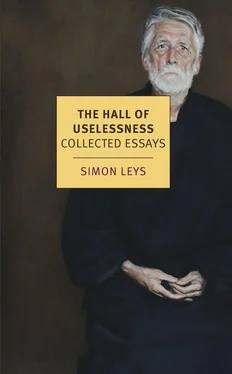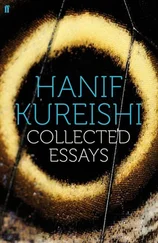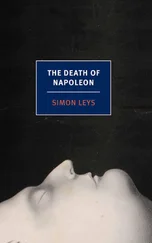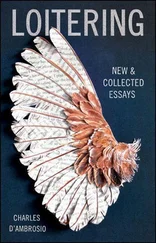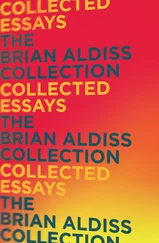In Bouvard et Pécuchet , Flaubert describes how two old bachelors living in retirement, after a dreary career as menial clerks, launch themselves into an encyclopaedic survey of all human knowledge. Their naïve venture soon becomes a circumnavigation of the immense, uncharted continent of human idiocy. At the start of his mad and desperate enterprise, Flaubert’s intention had been to portray his characters as two despicable fools — but the creatures soon rebel against their creator and reclaim their individual dignity. This momentous change occurs halfway through the book, when we are told that “a pitiful ability began to develop in their minds — the ability to detect stupidity, and not to tolerate it.” From that moment, Bouvard and Pécuchet become Flaubert himself, whose task, gigantic and hopeless, turned into mental — and physical — agony. He died at work, collapsing under the strain like a donkey crushed by its burden.
In his last work, Kafka described the search for salvation; Flaubert, the quest for meaning. But these pursuits take us into mysteries no mortal can fathom. It seems strangely appropriate that death should have intervened, ensuring these heroic explorations remain open — forever.
THE CHINESE ATTITUDE TOWARDS THE PAST
Le Tibre seul, qui vers la mer s’enfuit,
Reste de Rome. O mondaine inconstance!
Ce qui est ferme, est par le temps détruit,
Et ce qui fuit, au temps fait résistance.
— JOACHIM DU BELLAY, Les Antiquités de Rome (1558)
CHINA is the oldest living civilisation on Earth.[1] Such a unique continuity naturally implies a very complex relation between a people and their past. It seems that there is a paradox at the heart of this remarkable cultural longevity: cultivation of the moral and spiritual values of the ancients appears to have most often combined with a curious neglect of, or indifference (even at times downright iconoclasm) towards, the material heritage of the past. (Whether the spiritual continuity was achieved in spite of, or thanks to , a partial destruction of the material expressions of tradition is itself another issue, which will only be briefly evoked later on.)
This essay attempts a preliminary exploration of the parallel phenomena of spiritual preservation and material destruction that can be observed in the history of Chinese culture. The topic being vast, I shall merely outline here some of the directions and themes which a fuller inquiry ought to pursue. At this stage, my intention is not to provide any answers, but simply to define the question.
SPIRITUAL PRESENCE AND PHYSICAL
ABSENCE OF THE PAST IN CHINA
In his autobiography, Carl Gustav Jung described how, in his old age, he wished to go to Rome, which he had never visited before. He had always postponed this project, fearing that he might not be able to withstand the emotional impact of such an encounter with the living heart of Europe’s ancient culture. Eventually, as he entered a travel agency in Zurich to buy his ticket, he fainted and remained unconscious for a short interval. After this experience, he wisely decided to abandon his plans — and he never saw Rome.[2] Most sinologists are not endowed with antennae as subtle as Jung’s — and yet, even without being possessed of such sensitivity, it would be difficult for whoever studied classical China to approach the China of today and not to feel constantly touched, moved, overwhelmed by the extraordinary aura that seems to emanate everywhere from a land so suffused with history.
The presence of the past is constantly felt in China. Sometimes it is found in the most unexpected places, where it hits the visitor with added intensity: movie-theatre posters, advertisements for washing machines, televisions or toothpaste displayed along the streets are expressed in a written language that has remained practically unchanged for the last 2,000 years. In kindergarten, toddlers chant Tang poems that were written some 1,200 years ago. In railway stations, the mere consultation of a train timetable can be an intoxicating experience for any cultural historian: the imagination is stirred by these long lists of city names to which are still attached the vivid glories of past dynasties. Or again, in a typical and recent occurrence, archaeologists discovered in a 2,000-year-old tomb, among the foodstuff that had been buried with the deceased, ravioli which were in every respect identical to those that can be bought today in any street-corner shop. Similar examples could be multiplied endlessly.
Yet, at the same time, the paradox is that the very past which seems to penetrate everything, and to manifest itself with such surprising vigour, is also strangely evading our physical grasp. This same China which is loaded with so much history and so many memories is also oddly deprived of ancient monuments. In the Chinese landscape, there is a material absence of the past that can be most disconcerting for cultivated Western travellers — especially if they approach China with the criteria and standards that are naturally developed in a European environment. In Europe, in spite of countless wars and destruction, every age has left a considerable amount of monumental landmarks: the ruins of classical Greece and Rome, and all the great medieval cathedrals, the churches and palaces of the Renaissance period, the monuments of the Baroque era — all these form an unbroken chain of architectural witnesses that perpetuate the memory of the past, right into the heart of our modern cities. In China, on the contrary, if we except a very small number of famous ensembles (the antiquity of which is quite relative), what strikes the educated visitor is the monumental absence of the past. Most Chinese cities — including and especially those which were ancient capital cities or prestigious cultural centres — present today an aspect that may not look exactly new or modern (for, if modernisation is a target which China has now set for itself, there is still a long way to go before it can be reached), yet they still appear strangely devoid of all traditional character. On the whole, they seem to be a product of late-nineteenth-century industrialisation. Thus, the past which continues to animate Chinese life in so many striking, unexpected or subtle ways seems to inhabit the people rather than the bricks and stones. The Chinese past is both spiritually active and physically invisible.
It should be noted that, when I mention this physical elimination of the past, I am not trying to refer once more to the widespread and systematic destruction perpetrated by the “Cultural Revolution.” During the last years of the Maoist era, this destruction, it is true, literally resulted in a cultural desert — in some cities 95 to 100 per cent of historic and cultural relics were indeed lost forever. However, we must immediately point out that, if in so many cities it was possible for mere gangs of schoolchildren to loot, burn and raze to the ground the near totality of the local antiquities, it was because in the first instance there had not been much left for them to destroy. Actually, very few monuments had survived earlier historical disasters and, in consequence, the Maoist vandals found only rare targets on which to expend their energy. In this perspective, it might even be a mistake to look at the “Cultural Revolution” as if it was an accidental aberration. If we place it in a broader historical context, it may appear in fact as the latest expression of a very ancient phenomenon of massive iconoclasm, which was recurrent all through the ages. Without having to go very far back in time, the Taiping insurrection in the mid-nineteenth century produced a devastation that was far more radical than the “Cultural Revolution”—I shall come back later to this question of the periodic destruction of the material heritage of the past, which seems to have characterised Chinese history.
Читать дальше
